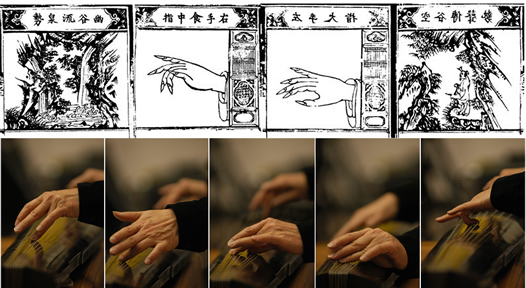
Representations of Guqin in China Today: from Pastoral Nostalgia, Cultural Etiquette to Revival Movements
In Chinese public perception, primary importance is given to the acoustical, musical, mythological and sociological properties of one particular instrument: the guqin. It has traditionally been singled out as having a special place in Chinese culture, history and organology. In todays China, one encounters many different, often contrasting representations of the instrument, which range from personal cultivation, socio-economic assertion, to pursuit of cultural belonging. This article examines and contrasts these expressions in an ample spectrum, showing traditional, historical and new surging, contemporary relationships that form between reality, symbols, and society. Included are examples from 13th Century paintings depicting noble guqin players, to recent CD sleeves of musicians posing in natural surroundings, from private in-house gatherings, to public Academic Guqin Associatons, and from proliferating teaching methods, to the virtual networks populating the Internet. Adopting Baudrillard’s simulacrum framework, the article argues that these different guqin embodiments are copies, sheltered from the imaginary mythological past of what the instrument represents or ought to represent, creating new realities, substituting the signs of the real for the real itself.
古琴在今日的中國呈現出的樣貌: 從渴望復古,到文化禮儀,再到復興運動
在中國人的觀點中給予最重要的聲學, 音樂, 神話以及社會等之屬性的樂器就是古琴。 古琴已在傳統中被孤立出來,並在中國文化, 歷史, 以及樂器學上享有一特殊地位。 在 今日的中國,人們會看到這樣一個很多樣貌的,並時常有著對比情況的古琴文化,其範圍 包括從個人文化修養, 到顯示在社會中的經濟地位, 到形成社會的歸屬感。本文由多方 面充分探討和比較這些樣貌, 指出其在現實性的,象徵性的以及社會性之間所形成的傳 統的, 歷史的和新湧現出的當代之關係。它包括了從十三世紀描繪貴族琴人的繪畫,到 近代琴人以在自然環境下撫琴的攝像作為光盤封面的設計; 從私人古琴雅集,到公共學術 古琴協會; 從不斷繁衍及推陳出新的教學方案,到充斥於視覺網絡互聯網等例子。採用尚· 布希亞的《擬仿物與擬像》的框架,本文認為,這些不同的古琴樣貌其實不是現實的而是 擬仿物與擬像,在來自懷古的擬像的庇護下, 想像著古琴代表的或應該代表的是什麼樣子 ,從而創造新的現實,取代對於實質本身的真實性的象徵。
- Date: January 12th, 17:00
- Place: Konfuzius-Institut Erfurt, Fachhochschule Erfurt
- More info:








